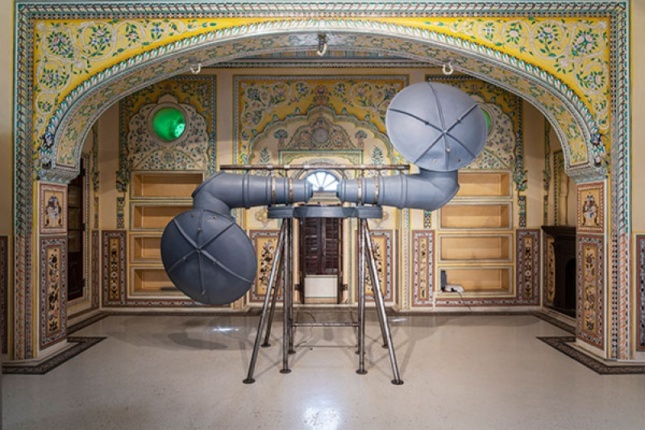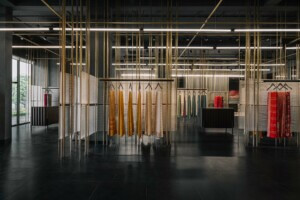India’s first public sculpture park opened last year in the sprawling Madhavendra Palace, a milestone for the country’s contemporary art scene. The palace’s formal corridors and rooms have been curated as a uniquely rich pathway for visitors to The Sculpture Park to see new works of contemporary sculpture in each edition of the park’s programming. This year, 23 artists have brought new, often site-specific works to the palace, and over half of them live and work in India themselves.
“For most of my career as a gallerist and curator, I have been trying to break away from the white-box exhibition space,” 2019 edition curator Peter Nagy told Hyperallergic. “With this project, I am able to indulge my passions for art, architecture, and decor into a marvelous synthesis of the past and the present.”

Completed in 1892, the Palace is the best-preserved section of the Nahargarh Fort complex, which was designed to sit organically amongst the hills as a pleasure retreat for Maharaja Sawai Madho Singh, founder of the city of Jaipur. Twenty-three artists will explore ideas of landscape, politics, and colonialism in their works this year, amidst the backdrop of an Indian heritage landmark to create a striking context. From architectural explorations of the intersections of modern colonial and traditional styles to World War II radio relics, the pieces are varied in narrative as well as scale, but united by their common backdrop.
The palace as sculpture park continues to exist as an example of public and private sectors working side-by-side for the proliferation of the arts. A collaboration between the Government of Rajasthan and Saat Saath Arts non-profit, The Sculpture Park states in its mission statement that the park is an example of an “India of the 21st century,” a “synthesis of the contemporary with the traditional, bringing art into the public realm and reclaiming public spaces.” But with works decrying hot-button issues such as the Kashmir border crises and the lingering effects of war and empire, it is difficult to see how the park’s artists plan to work with governmental bodies to reform the topics this exhibition is expressing.
Yet, the public is responding. Just since the park’s opening, visitation to the palace has increased by 37 percent.











